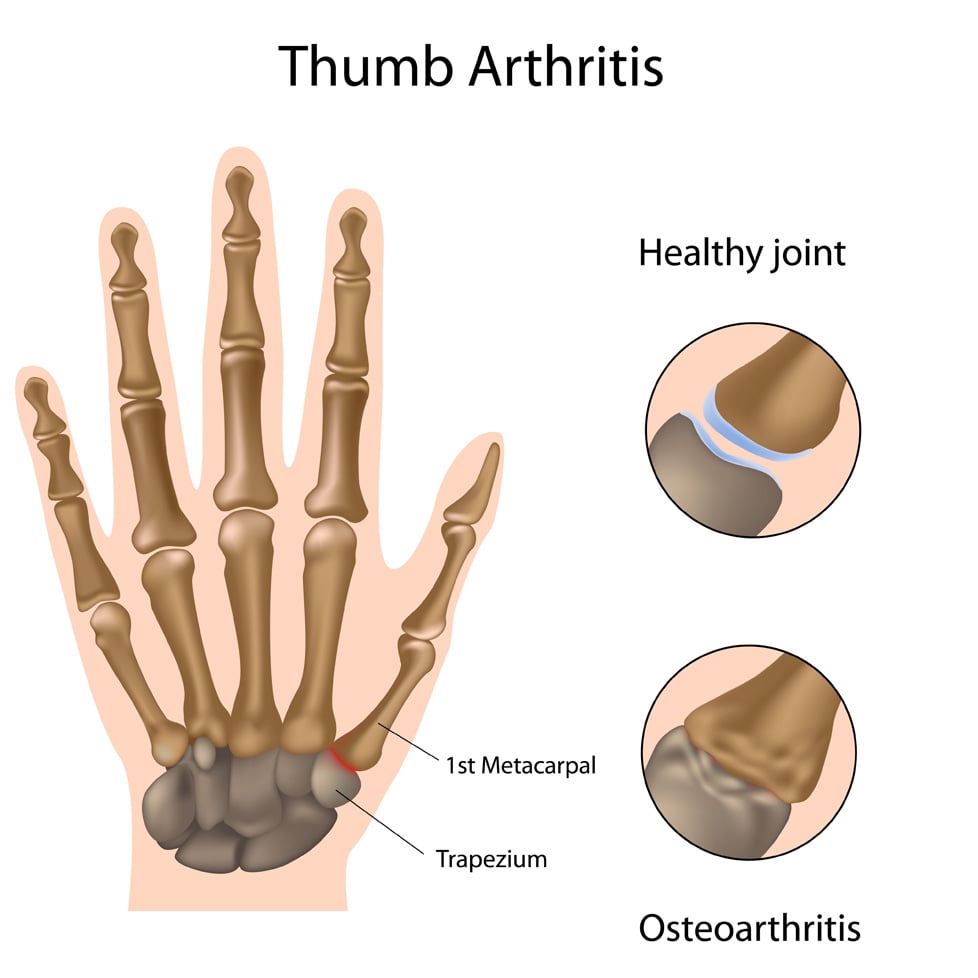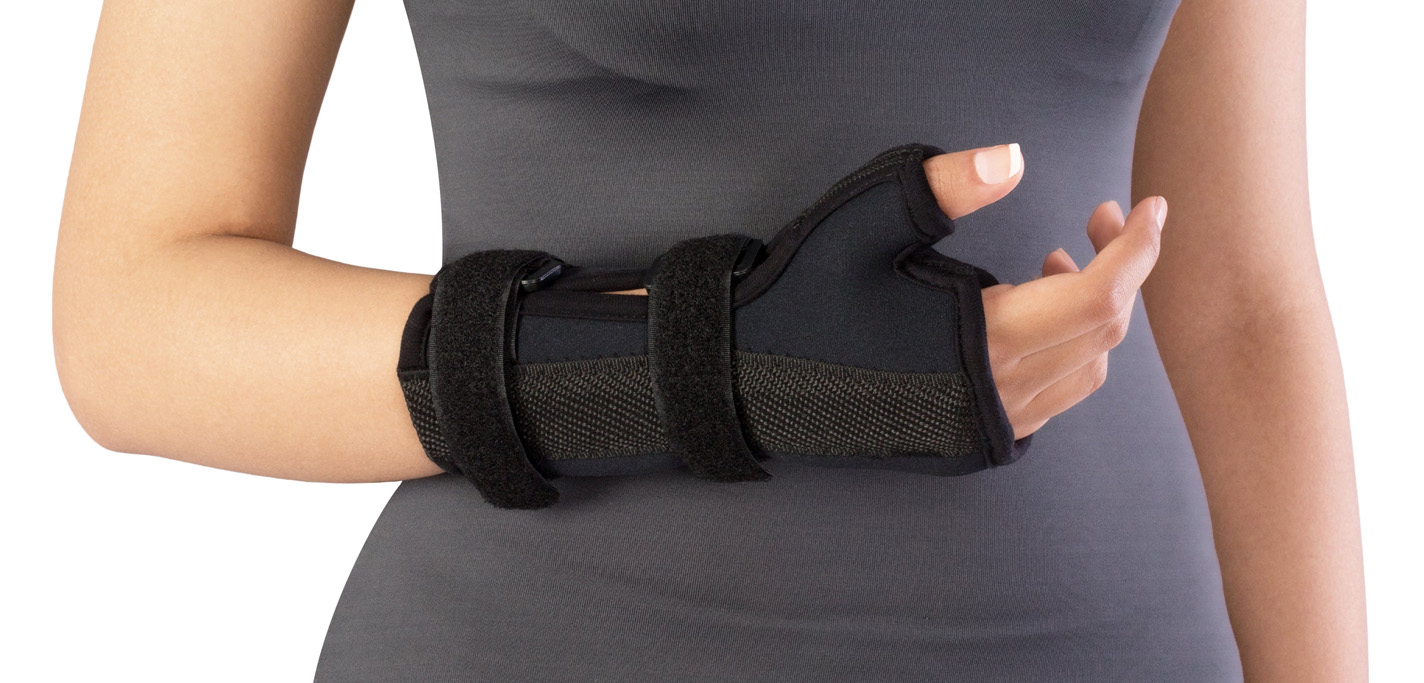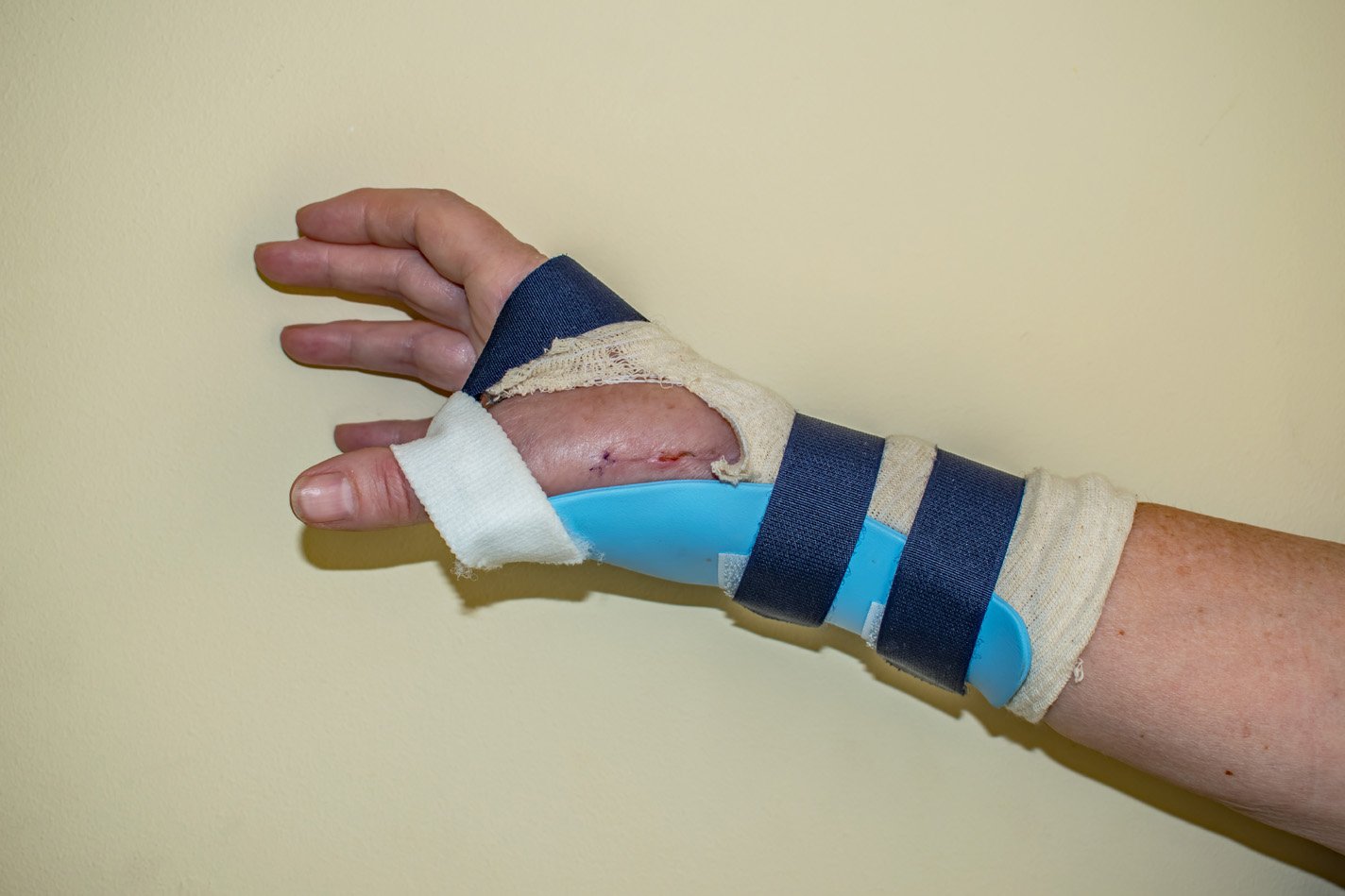What is Thumb CMC (Basal Joint) Arthritis?
 Arthritis literally means “inflamed joint”, and generally refers to any damage to the joints of the body. There are 36 joints in the hand and wrist, and several sites that are commonly affected by arthritis. The joints are lined by a smooth white material called cartilage. Osteoarthritis is the most common type of arthritis and is a degenerative breakdown of the joint cartilage over time. Less common forms of arthritis include damage to the joint due to injuries (post-traumatic arthritis), and inflammatory arthritis (rheumatoid, gout, psoriatic).
Arthritis literally means “inflamed joint”, and generally refers to any damage to the joints of the body. There are 36 joints in the hand and wrist, and several sites that are commonly affected by arthritis. The joints are lined by a smooth white material called cartilage. Osteoarthritis is the most common type of arthritis and is a degenerative breakdown of the joint cartilage over time. Less common forms of arthritis include damage to the joint due to injuries (post-traumatic arthritis), and inflammatory arthritis (rheumatoid, gout, psoriatic).
The CMC joint (also called the basal joint) at the base of the thumb is commonly affected by arthritis. It is the thumb joint located deep in the heel of the palm where the thumb metacarpal joins with a wrist bone called the trapezium. It is more common in women than men, and may start becoming symptomatic in some patients as early as their 30’s or 40’s.
Causes
There is still much that is unknown about what causes thumb CMC osteoarthritis. Genetic and hormonal factors are thought to play a role. Certain forceful repetitive “pinching” activities may either contribute to or aggravate the CMC arthritis
- Genetic, hormonal
- Repetitive forceful pinching activities
- Prior joint injuries
- Joint laxity (looseness)
- Inflammatory arthritis (rheumatoid)

Signs and symptoms
- Aching pain over the thumb CMC joint (heel of the palm)
- Worse with prolonged pinching or gripping (writing, driving)
- Cramping of the muscles in the palm
- Grinding sensation with use of the thumb
- Progressive deformity of the thumb
- “Bump” at the base of the thumb in heal of palm
- Hyperextension of the middle joint of the thumb (MP joint)
Is there a test for Thumb CMC Arthritis?
Yes! Your symptoms and medical history as well as an examination of your hand and wrist can help to diagnose thumb CMC arthritis. X-rays of the thumb will often show signs of arthritis like bone spurs and cysts. Sometimes very early CMC arthritis does not show these changes on x-ray. If inflammatory arthritis or infection is suspected, additional blood tests or MRI may be needed to determine the case of the arthritis.
Treatment
Unfortunately, there is no cure for arthritis, but there are good treatments. Nonoperative treatments can often adequately alleviate symptoms, but occasionally surgery is required
Nonoperative:
- Activity modifications (avoid forceful pinching, prolonged gripping)
- NSAIDS
- Thumb bracing
- Steroid injection

Thumb Spica Brace
Operative:
A thumb CMC joint reconstruction (CMC arthroplasty) procedure can be performed for those with moderate or severe arthritis that are not improving with nonoperative treatments. The most common variation of this procedure (LRTI procedure) involves removing the arthritic joint surface at the base of the thumb through a small incision, and then stabilizing the base of the thumb with tendons. This is performed in the operating room under sedation and regional block numbing of the arm. One important consideration for timing of this procedure is that the recovery process usually takes about three months to regain functional use of the thumb. Thumb splinting and hand therapy are required postoperatively for optimal results.

Postoperative Thumb Brace
Ready to confirm a diagnosis and fix the problem or just want to learn more?
Our board-certified orthopedic hand and wrist surgeons Eric Angermeier, MD and Kyle Kokko, MD, PhD, are here to help! They can often diagnose the problem in one visit, and get you started with a treatment plan. We offer a wide variety of both nonoperative and operative treatment options.
Call today for a clinic or telehealth appointment! 854-429-4263